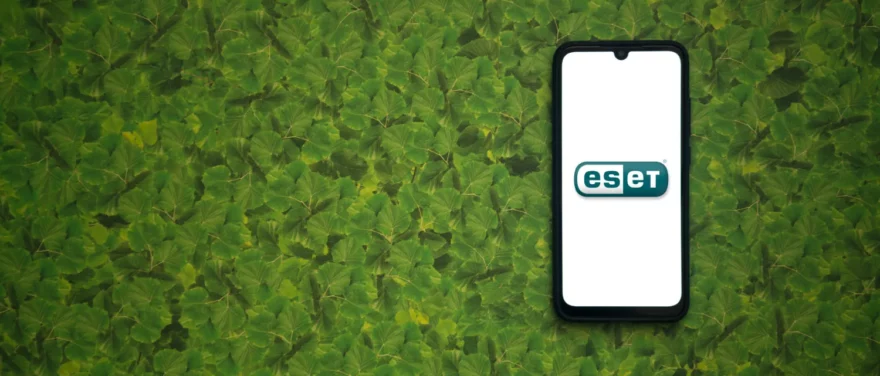
Microsoft Defender and ESET are two powerful antivirus software, despite their differences. Since Microsoft Defender is integrated into all new versions of the Windows operating system, users frequently question whether the level of protection it offers is sufficient against online threats or not. If the protection level is low, then how about considering ESET for better protection for your data and business?
This Microsoft Defender vs ESET article will explore both software and will shed more light on the features, installation, interface, protection level, pricing, and customer care each software offers to answer the question of which is better.
What is Microsoft Defender? What can it do for you?
Windows Defender made its debut in the cybersecurity universe with the Windows XP operating system as a downloadable file. Later versions of this operating system, such as Windows Vista and Windows 7, had Windows Defender as an additional installation step. Windows 8.1 was the first version of this operating system to have Windows Defender as an integrated antivirus software and has been included in all later versions of the Windows operating system.
Even though it’s free and integrated into your Windows installation, Windows Defender provides you with a solid protection level that increases automatically when your Windows version is higher. The level of this protection depends on your decision to frequently install security updates. If you choose to install third-party antivirus software, Microsoft Defender will automatically cease to work.

What is ESET? What can it do for you?
ESET is a multi-award-winner antivirus software from the parent Slovak cybersecurity company, ESET. This antivirus software was developed and constantly upgraded during the past 30 years. In their approach to cybersecurity and antivirus protection, the founders use the ESET Approach. We can summarise this approach in their usage of multi-layered protective measures to protect data.
ESET utilises modern technology such as machine learning, cloud experience and its own LiveSense technology in identifying and handling cybersecurity threats. ESET’s LiveSense technology consists of three layers of protection, the Pre-Execution Layer, the Execution Layer and the Post-Execution Layer. These three layers put ESET in the league of the world’s strongest antivirus software.
Microsoft Defender vs ESET: Let the Battle Begin
If you have Microsoft Defender, what would prompt you to forego it and purchase paid antivirus software like ESET? We put each software to the test to answer this dilemma.
Features
Antivirus software’s features are the main reason users choose it over other ones in the market. These features can also mitigate the effect this purchase can have on the consumer’s wallet. What features does each contender have to attract users?
Microsoft Defender
Microsoft Defender offers a noteworthy array of features; some of these can even be used alongside third-party antivirus software. It protects your device from ransomware attacks by preemptively scanning and handling suspicious threats. You will get a password manager, Windows Hello!, which offers additional means to secure your passwords, such as fingerprint recognition. MD also offers you 5 GB backup space on its cloud storage feature, OneDrive. The last feature that distinguishes Microsoft Defender from other antivirus software is its advanced Parental Control, which remains updated as long as you automatically install security updates when available.
ESET
ESET offers you Anti-theft Protection, Webcam Protection and Privacy Protection, besides protecting your devices from viruses, malware, ransomware and phishing attempts. The software includes a safe browser where you can safely access your banking information without worrying about prying cyber attackers. Since this powerful antivirus software supports several operating systems besides Windows, such as MacOS and Android, you can be certain that all your devices will have proper protection. It’s worth noting that available features can differ from one operating system to the other.
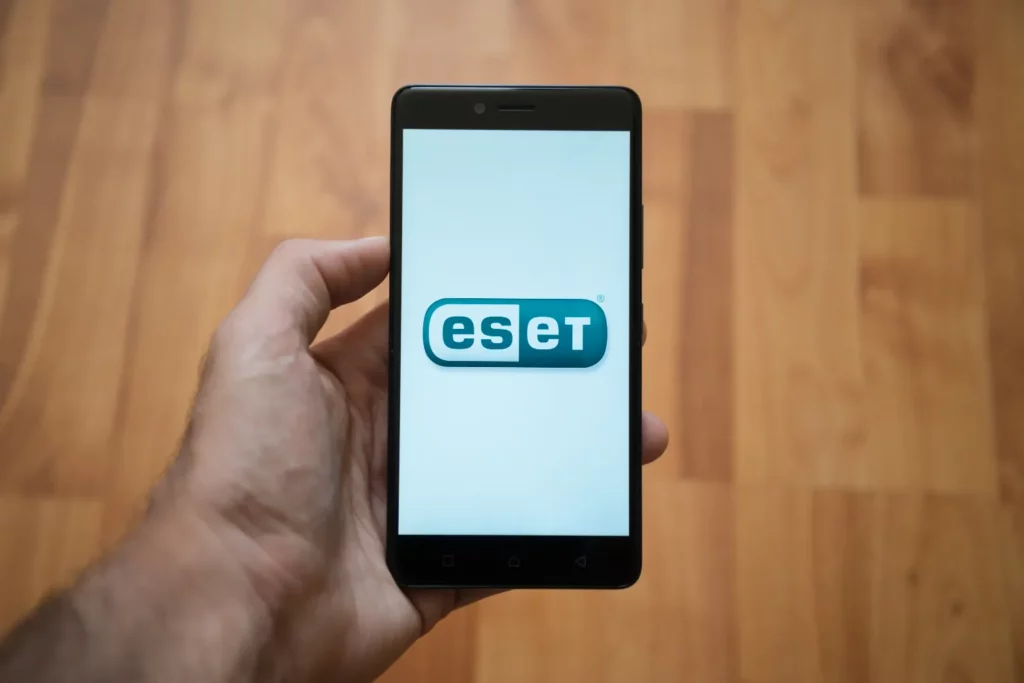
- Winner
Each antivirus offers a different set of features, which prompts us to call this first round a tie.
Installation
Complex installation processes can attract or repel users. As an antivirus software developer, you must tend to the needs of both casual and professional users. So, let’s see how each of our contenders did.
Microsoft Defender
Microsoft Defender is a preinstalled antivirus software on all later versions of Windows operating systems after the 8.1 version. When you finish setting up your operating system, you can customise all the settings of your integrated antivirus software by accessing it from the Start list and choosing the Windows Security application.
ESET
ESET’s installation begins when you select your desired plan and the length of your subscription; you can purchase a monthly or yearly subscription. Afterwards, you are guided through the installation process, which takes less than five minutes, including the installation itself. When the software finishes, you are greeted with its famous interface.
- Winner
For their simplicity and clearness, we give each antivirus software a point here.
User-Friendly Interface
Antivirus software developers work hard to make the software’s interface simple enough for beginners to understand and navigate through and cater to the particularity of professional users and their desire to adjust advanced settings how they see fit.
Microsoft Defender
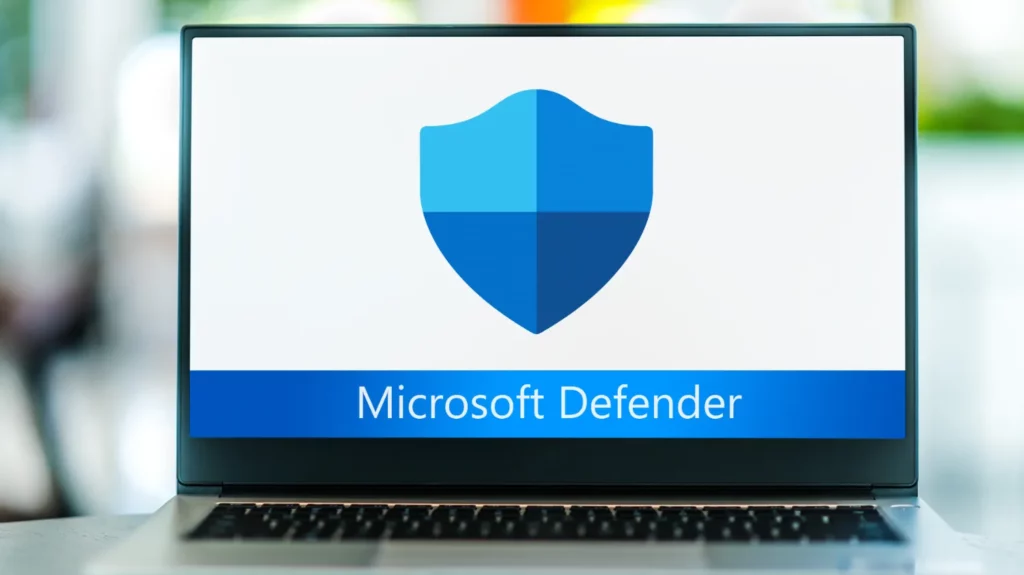
MD’s interface is a clean white dashboard with three possible status colours. If it’s green, you’re all protected. If it’s orange, there’s an issue that needs handling, and if it’s red, then your data is under active danger. The dashboard includes shortcuts to the software’s most popular features, such as Virus&Threat Protection, Family Options and Device Security. On the left-hand side of the dashboard, you will find a full list of the features in front of you.
ESET
ESET’s dashboard includes its features on the left-hand side, with features such as Computer Scans, Updates, Tools and Setup. The middle of the dashboard boasts a sign of “You Are Protected” in green when your system is all clear from threats. Besides this sign is ESET’s signature robot looking right at you. Down in the middle of the dashboard, you have three features, the Password Manager, Secure Data and Connected Home Monitor, which observes your home network for threats.
- Winner
We call this round a tie!
Protection
Both contenders provide excellent protection against malware, phishing and other security threats, with little differences between the two. How did each of them perform in real-time tests?
Microsoft Defender
Microsoft Defender blocked 99% of malware in real-time protection. It also blocked all malware download attempts except malware hiding in Zip files. MD will protect you against any phishing attempts by blocking suspicious downloads or access to suspicious websites. To protect you against ransomware, Microsoft Defender offers you the Controlled folder, where you can keep files safe from unauthorised applications.
ESET
This antivirus software’s scores are close to those of Microsoft Defender; it blocked 100% of real-time threats. Additionally, ESET blocked all suspicious download attempts, even those hidden in Zip files, beating MD with this feature. ESET also provides you with the Ransomware Shield feature and HIPS (Host Intrusion Prevention System), and together they monitor, block and terminate any possible threats. If you want to specify certain files to remain unchanged, you can exclude them in HIPS customisation options.
- Winner
For its more thorough malware detection features, ESET wins this round.
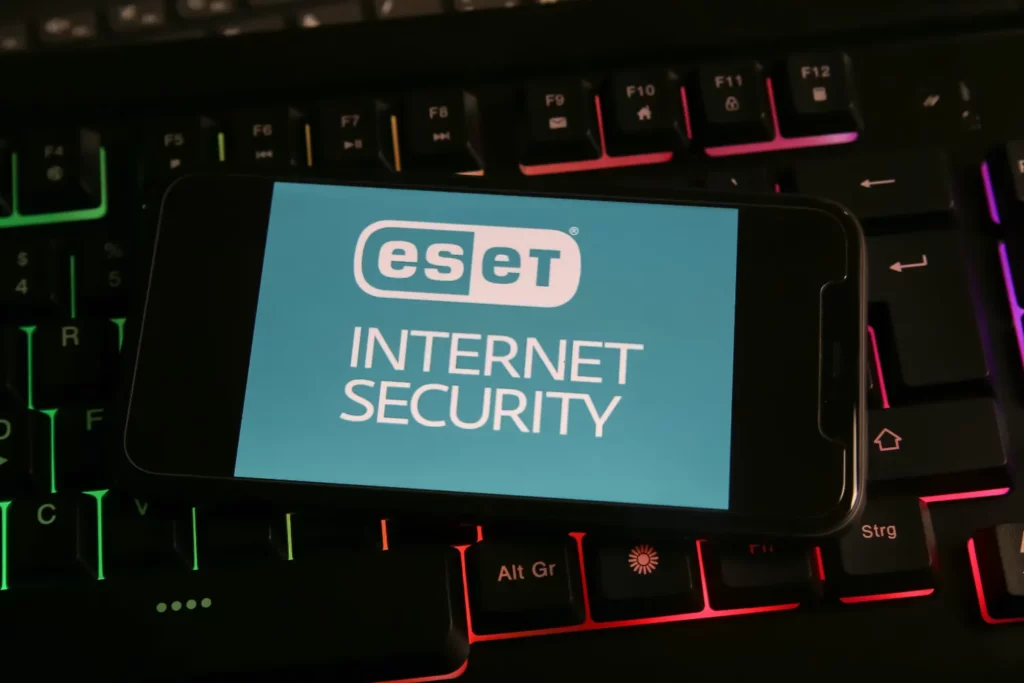
Impact on System Performance
Balancing efficiency and low impact on system performance is one of the main reasons customers can switch from one antivirus software to another. Let’s see how each contender will affect your system performance.
Microsoft Defender
A full system scan by Microsoft Defender will use 100% of your CPU’s capacity, which greatly contradicts the generally low impact it has on the operating system. The same scan had no effect on the device’s memory, which remained at 74%. Additionally, Microsoft Defender caused the system to slow down by 16% during online surfing and by 40% when copying files. Microsoft Defender finished the full system scan in a little over an hour, which is too long for such an impact on the system. Microsoft Defender scored a perfect grade in the Av-Test scores but fell short in the Av-Comparatives with low grades in file copying.
ESET
The same scan type, full system scan, by ESET only used 29% of the CPU’s capacity, and it affected device memory by 84%. These figures go hand in hand with the software’s lightweight features and use fewer system resources than its contender. The software slowed the device down by 21% while online surfing and by 2% only when copying files. It took the antivirus software only 30 minutes to complete the full system scan, which allows you to get back to your business faster. This Software achieved a perfect score in both lab tests, the Av-Test and Av-Comparatives, with a minor slip in the file copying category.
- Winner
ESET’s low impact on system performance parallels its lightweight features and high scores in lab tests, which scores the win for it in this round.
Scanning
Any antivirus software must offer a Full System Scan; it’s the range of other available scans that distinguish one software from the other.
Microsoft Defender
Surprisingly, Microsoft Defender offers you more scans than ESET. If you’re using MD as your antivirus software, you will get Quick, Full, Custom and Removable External Storage scans.
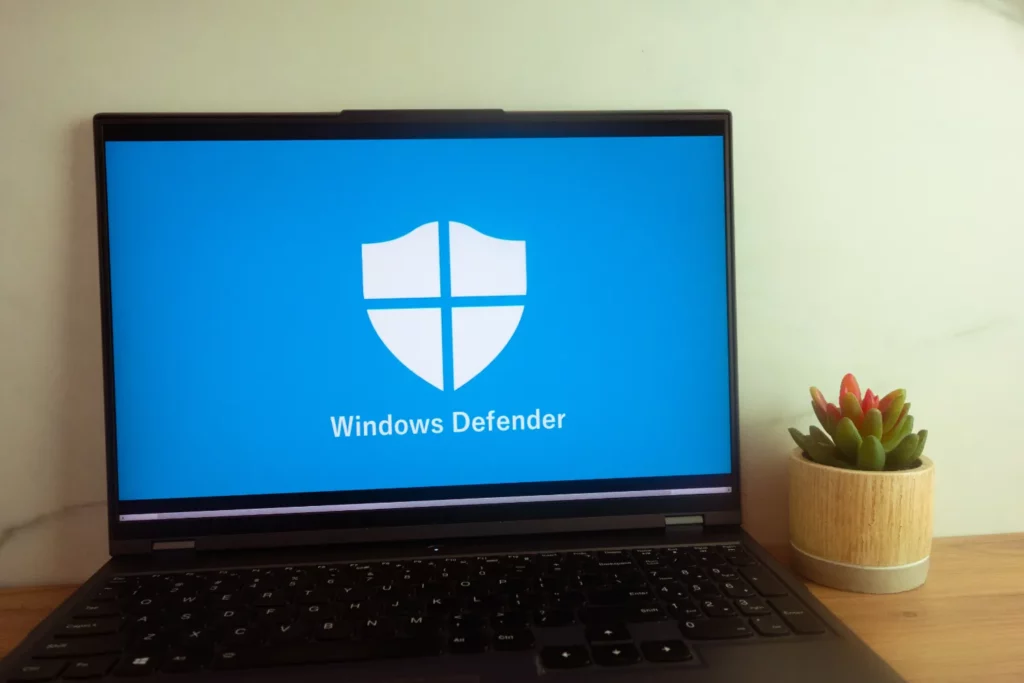
ESET
This antivirus offers you three basic types of scans; Full, Custom and Removable External Storage scans.
- Winner
Microsoft Defender wins over this round.
Pricing
When choosing the ideal antivirus software, you will definitely look to get the best value for your hard-earned money. Which of our contenders offers the best value for money?
Microsoft Defender
Microsoft Defender is a built-in antivirus software and firewall. The software has been an integral part of the Windows operating system in the past years. It also offers a good level of protection against viruses and malware. However, it still lacks essential protective tools such as a VPN and a password manager.
ESET
ESET includes only antivirus-paid plans with various divisions. There are individual and business plans, and there are plans for different operating systems, such as Windows, Mac and Android. The cheapest antivirus plan is $39.99 a year for the ESET NOD32, an individual plan that protects one device only. The most expensive antivirus plan here is the ESET Smart Security Premium for $59.99 a year.
- Winner
It’s difficult to choose a winner in this round since MD is free, and ESET offers a 30-day free trial with only paid plans. We call this round a draw.
Supported Operating Systems
When an antivirus software supports more than just one operating system, it becomes more appealing to users, who would prefer to use the same software over their various devices without the need for specific software for each device.
Microsoft Defender
One of MD’s downfalls is it only supports the Windows operating system. This pushes users away from alternative antivirus software that supports multiple operating systems to provide protection for their computers and mobile phones as well.
ESET
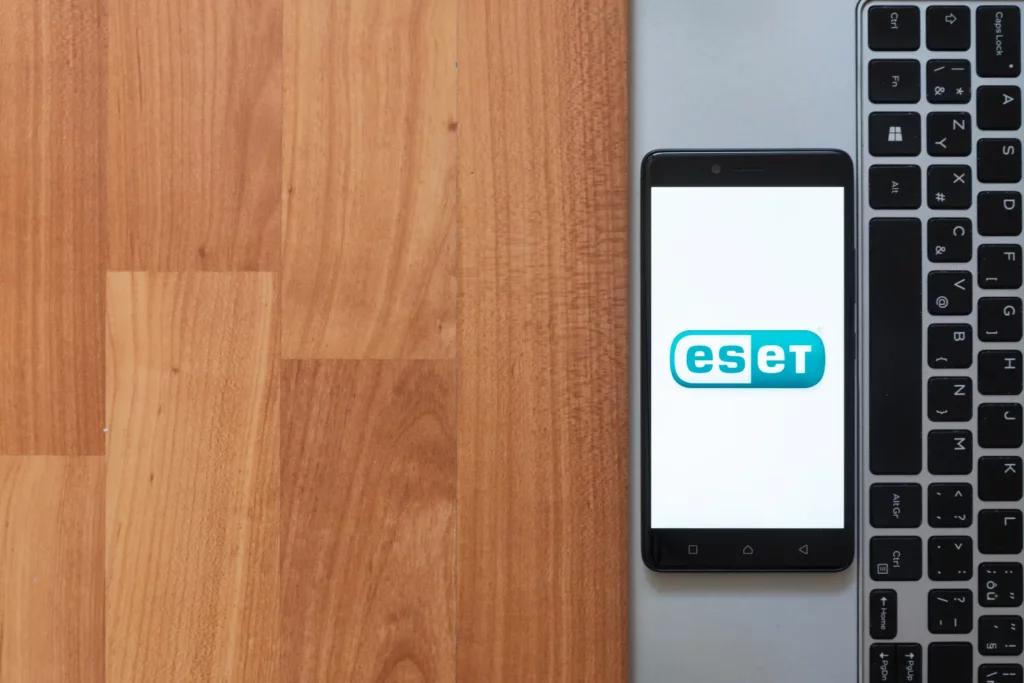
Like its contender, ESET is also compatible with the Windows operating system. However, unlike its contender, this antivirus software is also compatible with MacOS, Linux and Android.
- Winner
ESET wins this round deservingly.
Customer Support
When you offer your customers great support following their purchase of your products, you are investing in creating a loyal customer who will continue to support your product through the years. Which of our contenders offers better customer support?
Microsoft Defender
Microsoft Defender’s customer support is one to match. The software offers instruction videos, an online knowledge database, live chat and occasionally, telephone support. Users praised the software’s customer support for its speedy response and thoughtfulness.
ESET
You can choose between four means of support when you encounter a problem while using ESET. You can visit the software’s user guides, online knowledge base, live chat or e-mail support to find an answer to your question. Users who tried live chat were pleased to have gotten an answer in less than two minutes, while users who opted to send an e-mail got an answer in less than 24 hours.
- Winner
This round is a clear tie.
To sum up the comparison between our contenders, here are all our findings:
| Category | Microsoft Defender | ESET |
| Features | √ | √ |
| Installation | √ | √ |
| User-friendly Interface | √ | √ |
| Protection | √ | |
| Impact on System Performance | √ | |
| Scanning | √ | |
| Pricing | √ | √ |
| Supported Operating System | √ | |
| Customer Support | √ | √ |
We’d like to stress that Microsoft Defender remains a solid antivirus; it’s free and comes preinstalled with good protection if you can’t afford to purchase a yearly ESET plan.
